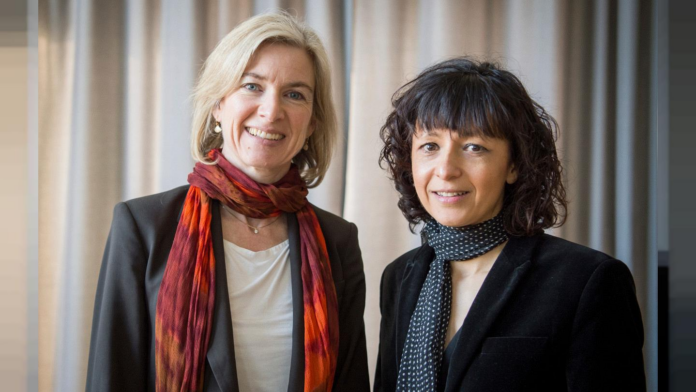By Emma Wu
Emmanuelle Charpentier, a French professor, and Jennifer Doudna, an American biochemist, are the 6th and 7th women to win the Nobel Prize in Chemistry. Their discovery of CRISPR-Cas9 is a molecular tool that can be used to make precise incisions in the genetic material, making it easier to edit genetic code. This discovery revolutionized molecular life sciences, bringing new opportunities with breathtaking potential.
Charpentier, who began as a university teaching assistant, has become a prominent figure in the sciences today. Graduating from Sorbonne University Pierre and Marie Curie Campus, her research on the CRISPR-Cas9 began with her discovery of a novel mechanism for the maturation of non-coding RNA, which was an essential component of the function of CRISPR-Cas9. Her discovery occurred while she was deciphering the molecules of the bacterial CRISPR-Cas9 immune system. This information was to be used into a tool for genome editing; her work jump-started this life-changing discovery.
On the other hand, Doudna graduated from Pomona College and earned her PhD from Harvard Medical School in 1989. When she met Charpentier in 2011 at a conference, their 9 year collaboration began. She was the first to propose that CRISPR-Cas9 could be used as a tool for program editing of genomes, and her leadership and fundamental work in the project were a major contribution to the success of the project. Shortly after she was awarded the Nobel Prize, she published a book titled A Crack in Creation: Gene Editing and the Unthinkable Power to Control Evolution.
CRISPR-Cas9 relies on a protein called Cas9, which is found in the bacterium “CRISPR” within the immune system. This protein attacks the DNA of viruses before slicing it up, preventing the infection of the bacterium. Doudna showed that this protein could be programmed with different RNA’s to cut and edit other DNA’s. CRISPR-Cas9 is being used more and more to edit DNA. Doudna also discovered that this work could be used to discover new drugs that could prevent infections without causing harm to body tissue.
In short, there are many undiscovered potentials that this work could be the key to unlocking. This technique is a major breakthrough, and it will continue to be an essential tool to the sciences in the near future.

